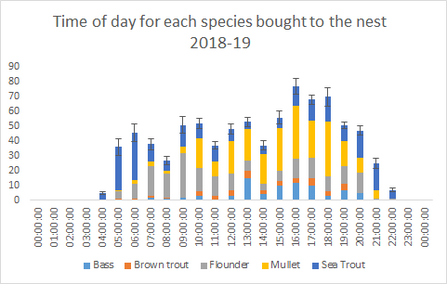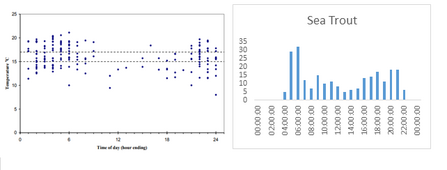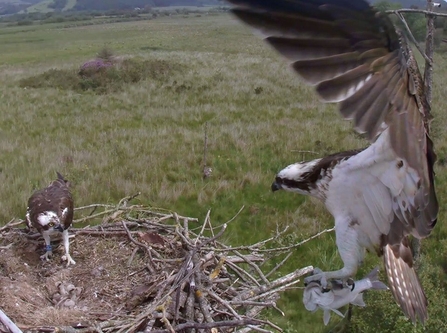Why are mullet, sea trout and flounder so prevalent in Monty's diet? Are there any environmental factors that affect the "choice" of what fish are caught?
As many of you may know, I have been undertaking a Masters of Research course studying our lovely ospreys.
A few years ago in 2013 Stacey Melia conducted an excellent study asking the question “was there an effect of environmental conditions on Osprey chick diet”. The conclusion of that paper was that tidal depth, wind direction, cloud cover, wind direction, temperature, rainfall, tidal depth and moon phase does not affect Monty’s fishing habits in any significant way.
Using this study as a guide I recognised some questions that were left to be answered. To investigate this I have focused on the three key targets for Monty: flounder, mullet and sea trout.
Time until/from high tide
The X axis shows the number of hours since high tide (0 = high tide, 0.5 is 12 hours). The Y axis shows the number of fish caught at each time interval (time interval beginning with 0.1 for example).




